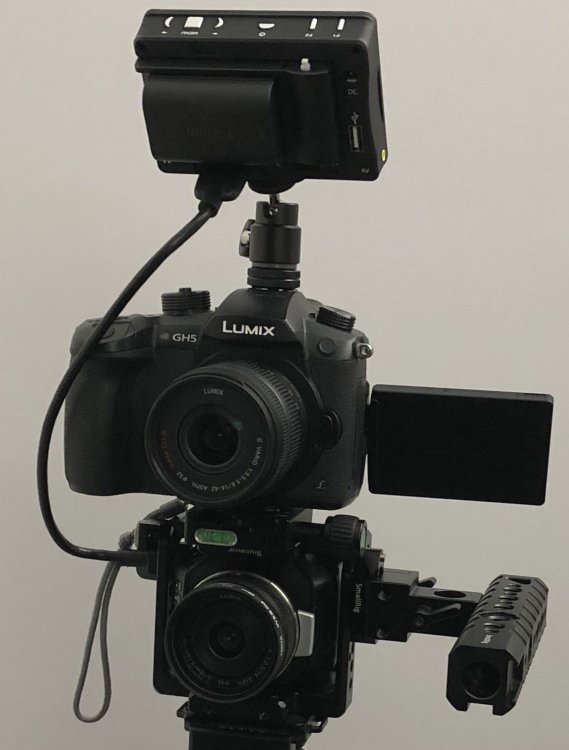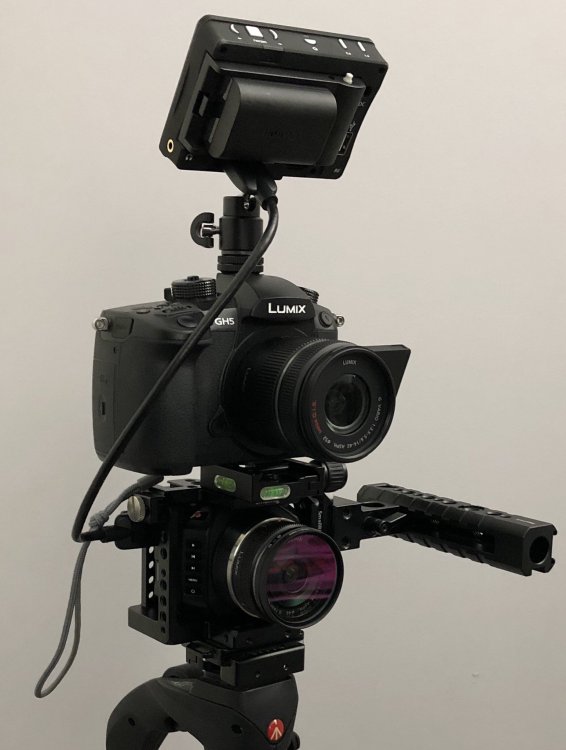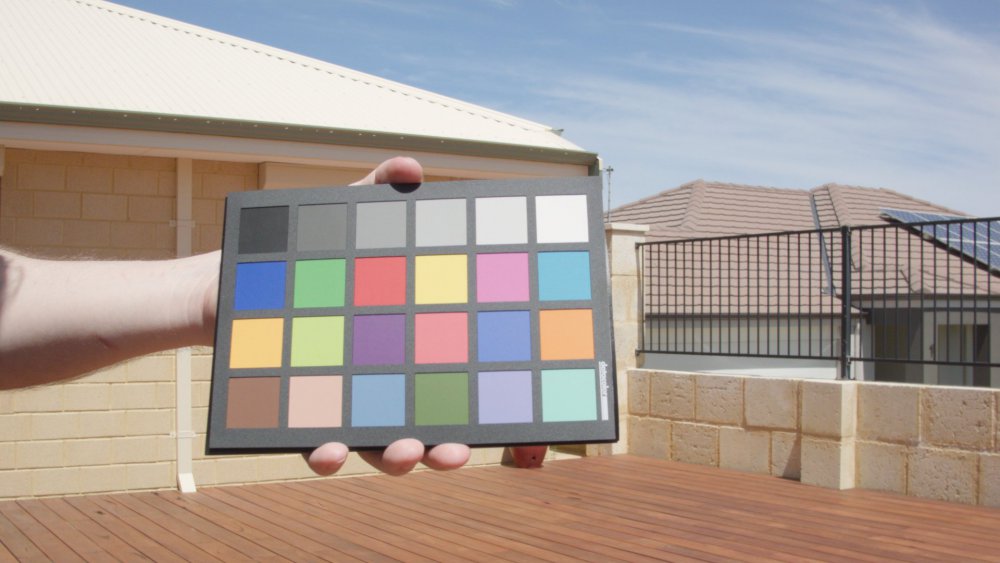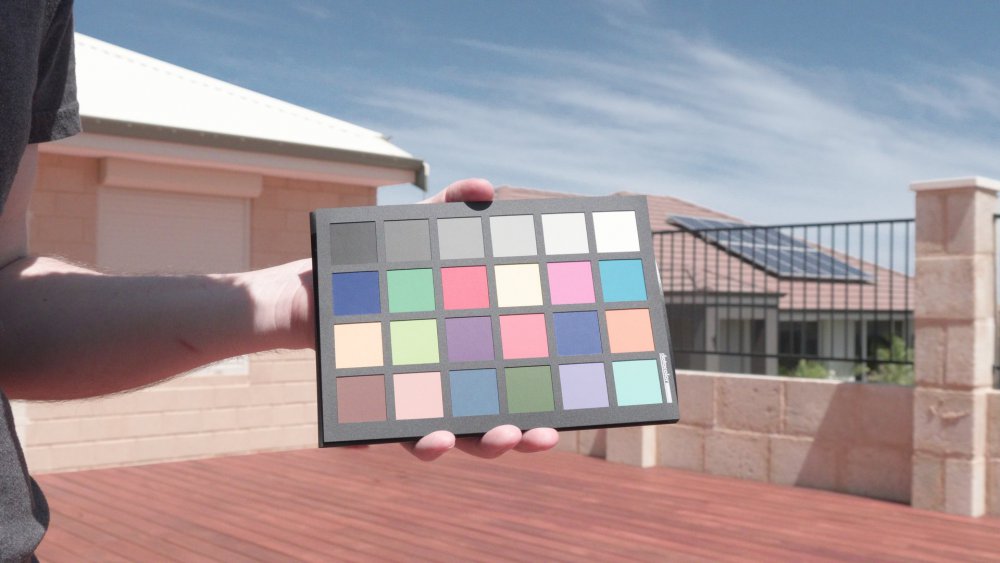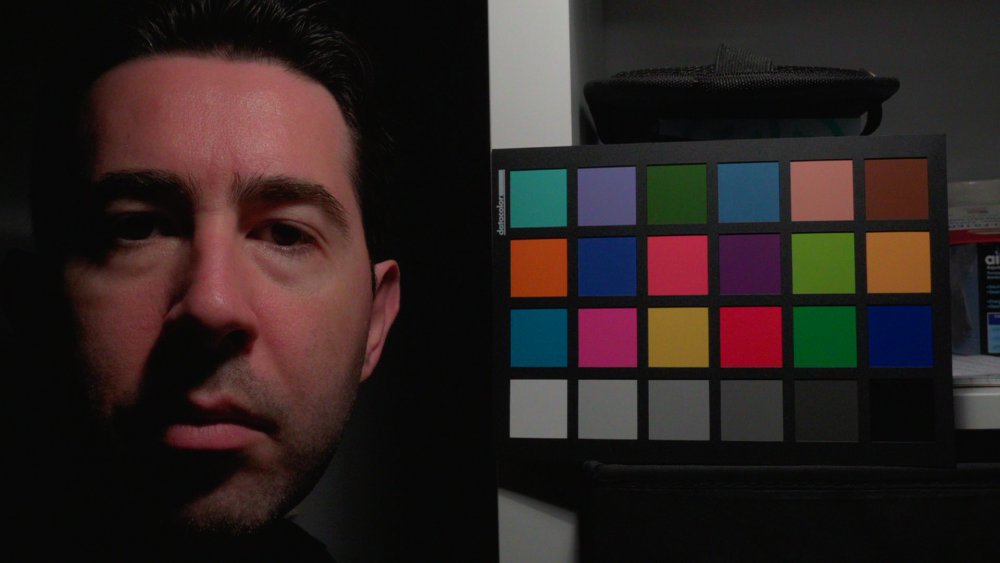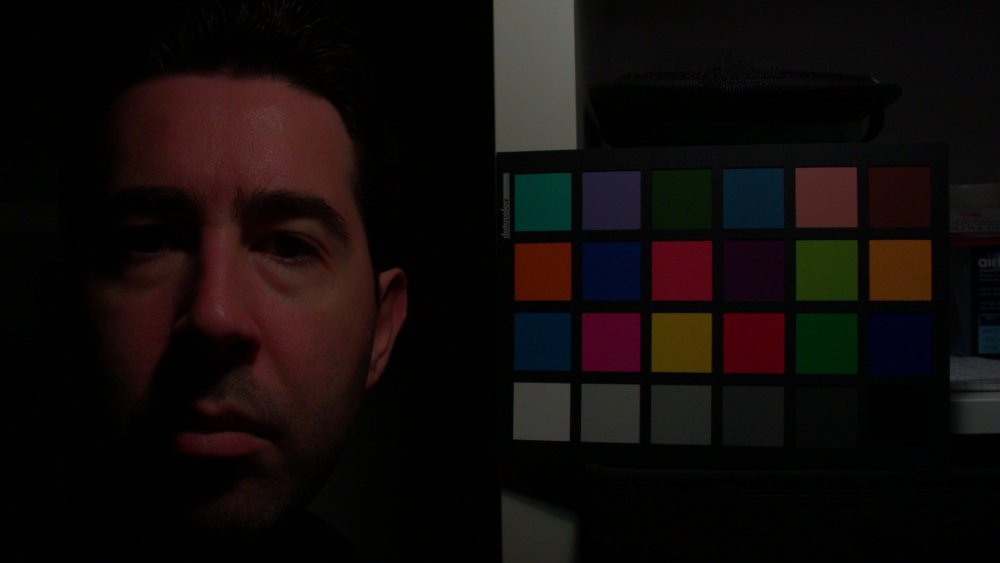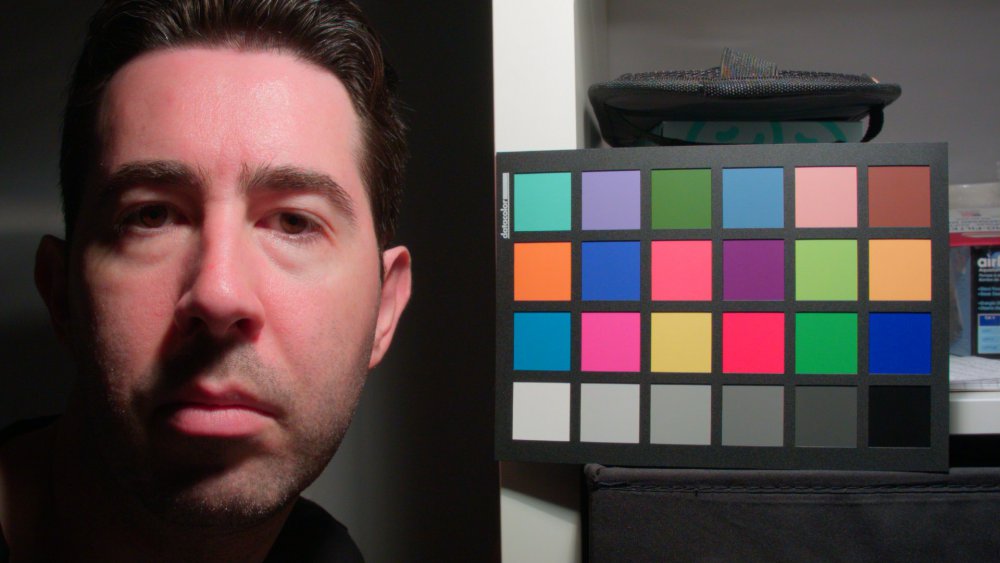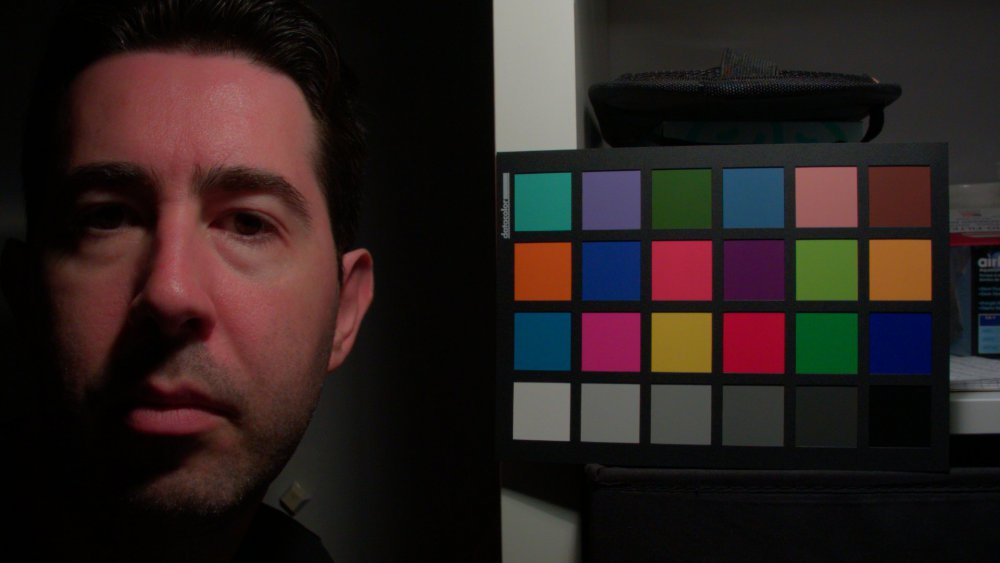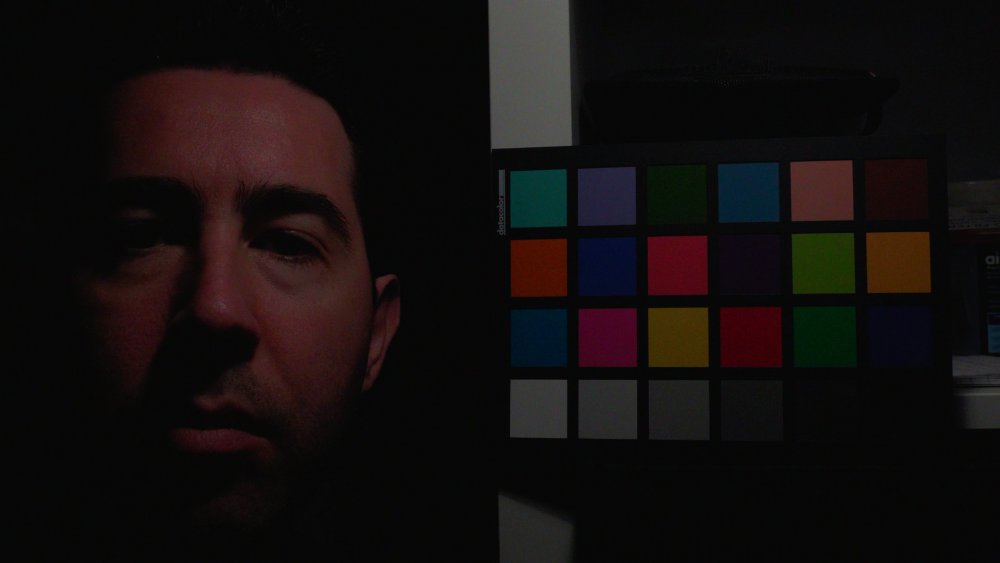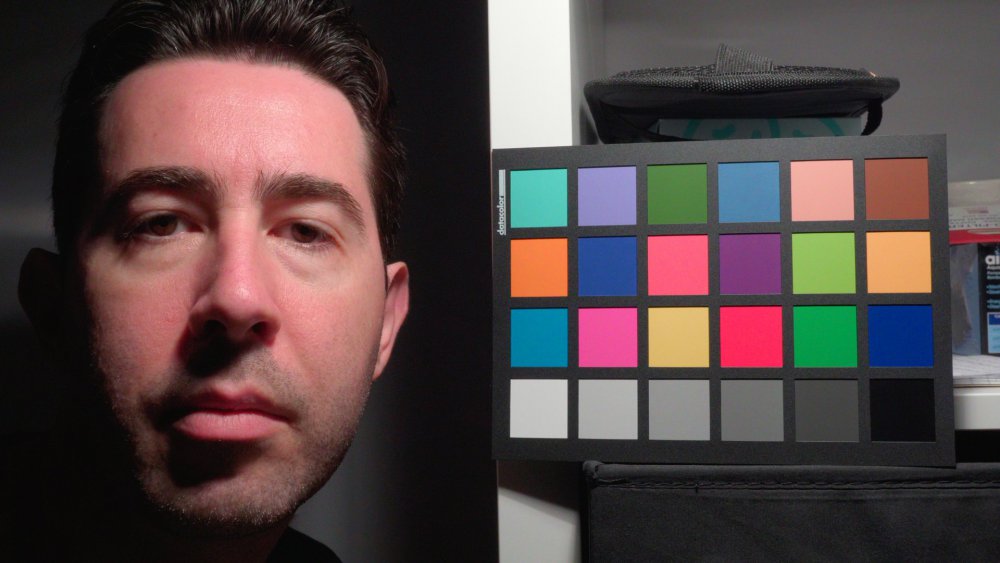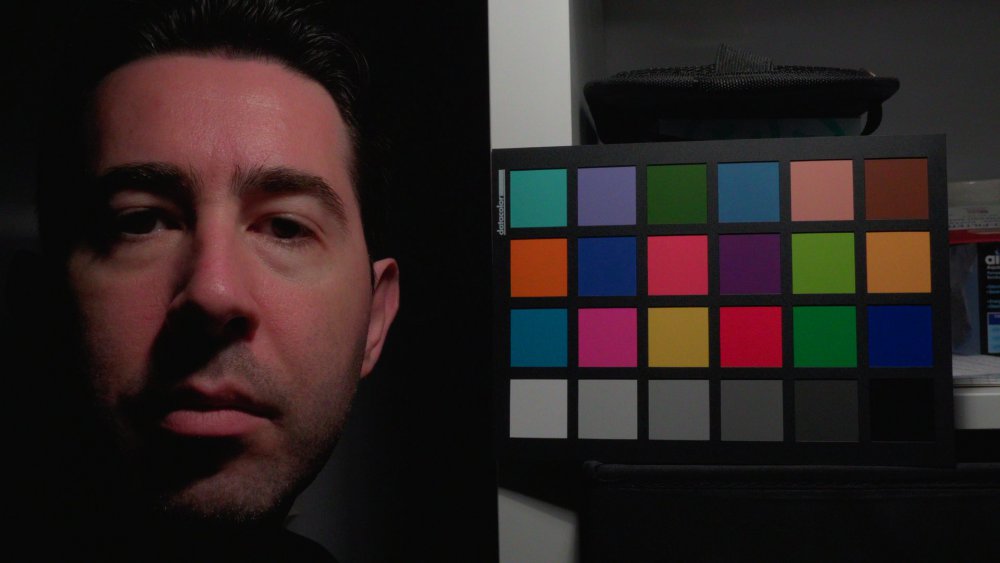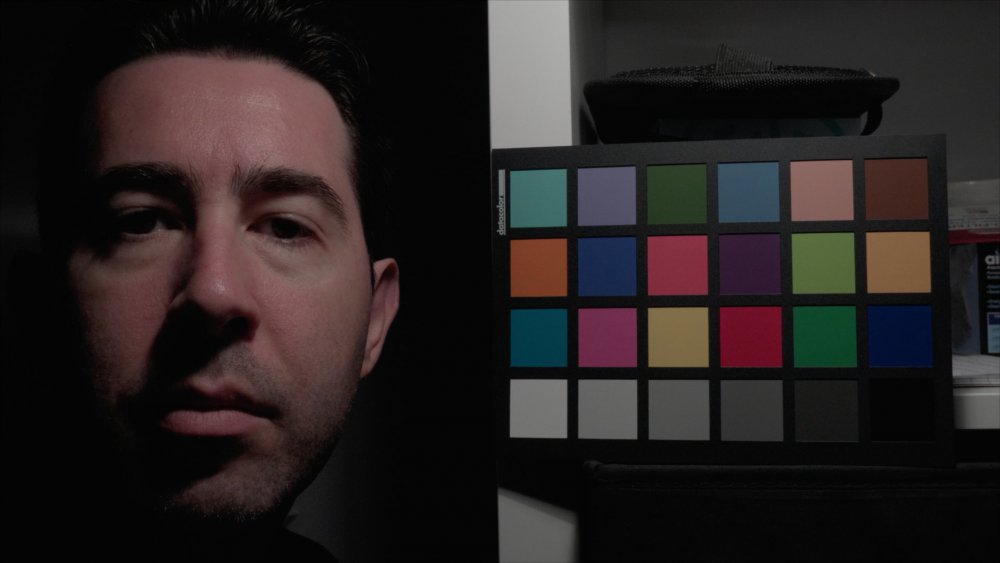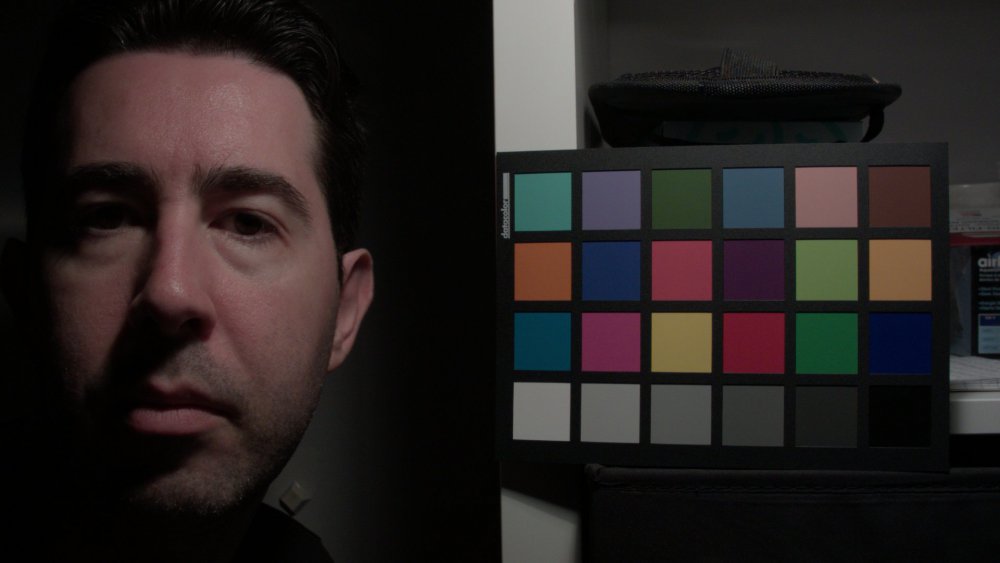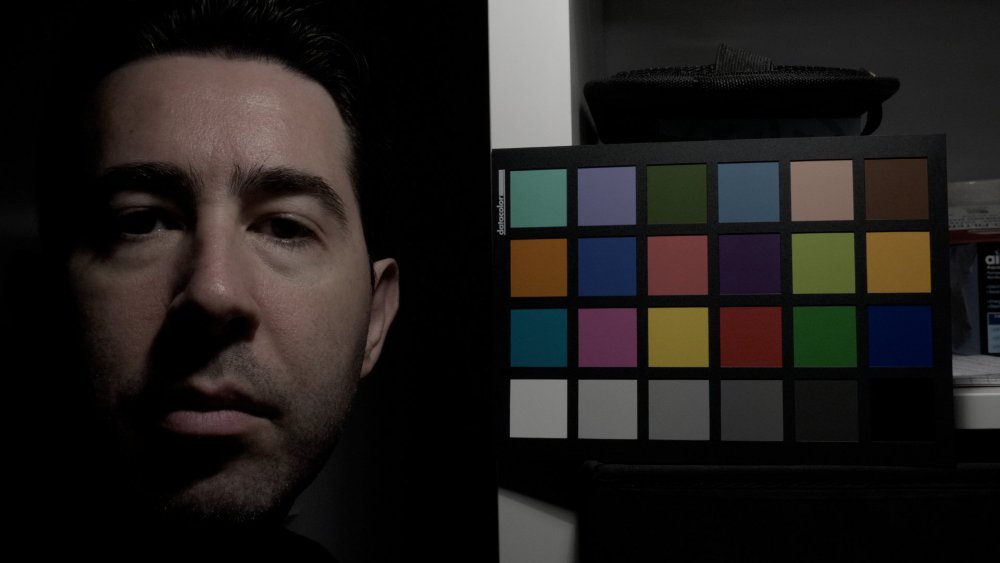-
Posts
7,835 -
Joined
-
Last visited
Content Type
Profiles
Forums
Articles
Everything posted by kye
-
Get them to film something too A 5 minute film made from footage shot on the trip would be a great project!
-
I appreciate that this is part of a much larger subject, but I think you're still not getting this. There is a perspective that many people take, which assumes that higher resolution is better, and that back in the day people chose the highest resolution lenses that they could and it was just the tech that limited that. This is where you (and others) are fundamentally disconnected from the high-end of cinema - the point of me showing you the article on netting is that people are actively going out of their way to reduce the sharpness of fine detail - which is a more technically accurate way of saying that people are reducing resolution. Deliberately. They're actually taking what is on offer currently and paying to soften it. They even used to do that in the days of film too, back when the technology had lower resolution. Even those older lenses were too sharp! This is a fundamental lack of understanding - when people say "I want my video to be cinematic" and then they say "I can't do X because it's not sharp enough" they are arguing against themselves. Part of the cinematic look is the lower resolution. If you're still unconvinced this is a real thing, then here's an article talking about Knives Out and Star Wars: The Last Jedi and how some/all of these were shot on digital but were processed (including halation, which is a particular type of softening of fine detail) on purpose. https://www.polygon.com/2020/2/6/21125680/film-vs-digital-debate-movies-cinematography You cannot possibly think that they didn't have enough budget to do whatever they wanted, and could have shot it in RAW 8K with $100k lenses, so I hope this demonstrates that this is a serious thing that Hollywood actually does. The people who are talking about resolution and sharpness are in a different world than this, looking in lustfully at the images and then insisting on doing things that will take them further away from the look they want rather than closer to it. But they don't know, because they're only talking to the stills photographers online.
-
Not ideology.. we're all chasing an image that's as high-end or highest quality as we can. The issue that we have here on this forum is that we are very out-of-touch with what techniques are used to get the images that we admire, from large budget productions, or from classic films anyway. There is a lot of stuff that isn't spoken about online, and it kind of exists outside of the internet, or at least is hidden behind paywalls. It's easy to spend a long time consuming content and interacting with people online without ever really knowing that this stuff exists, especially now with social media 3.0 actively creating echo-chambers. In order to move out of the realm of ideology completely, let's look at some data. I'm going to assume that you know how to read an MTF chart, since you seem to value resolution so highly. If you don't then I'd highly recommend you look into them, they're invaluable. One thing you may not be aware of however, is that lenses don't have a "resolution". To say one lens is 14MP and another is 16MP is oversimplification to the point it's misleading, because it's not that simple. The resolution of a lens will blur detail, which essentially has a softening effect, lowering contrast of that detail. Yes, there does get a point where if the detail is fine enough then the lens has lowered the contrast of that detail to zero, but the transition from it being very sharp (ie, high contrast) to very soft (ie, low contrast) is actually a progressive one. MTF charts show this softening effect by measuring contrast at varying lines per mm, lp/mm, and obviously the higher the lines per mm you use to measure, the less contrast a given lens will have. This is an important distinction, as we will see later. Amongst the most popular workhorse cinema lenses are the Zeiss CP.2 primes. Here is how they measure: https://www.lensrentals.com/blog/2019/06/just-the-cinema-mtf-charts-zeiss-cine-lenses/ Here is one of the MFT charts: This indicates that with fine detail they have very low levels of contrast, ie, low resolution. Here's a chart from the Xeen testing article: https://www.lensrentals.com/blog/2019/05/just-the-cinema-lens-mtf-charts-xeen-and-schneider/ This is even lower resolution again. Lets compare a 50mm Zeiss CP.2 to a high resolution lens: The Zeiss is obviously inferior in resolution terms to the other lens by quite some margin. Also, that other lens also happens to be an MFT lens. So why are cinematographers happy with such poor resolution. Well, there's two factors that I can see, one is that digital video has been low resolution historically, and the other reason is that cinematographers actually like lower contrast lenses and will go to reasonable lengths to lower it. Remember when I said above that a "lower resolution" lens is actually a lens that has relatively lower contrast on finer details than another lens. Have a read of this article: https://www.provideocoalition.com/the-secret-life-of-behind-the-lens-nets/ This article talks about how cinematographers are deliberately putting netting / fabric between the lens and the camera, in order to lower the contrast of fine detail. ie, to lower resolution. Some examples from that article... A close-up with no net: Black sparkle mesh: Silver sparkle mesh: Cropping is indeed a thing now, especially on lower budget productions where multiple cameras or multiple takes with different focal lengths are beyond the budget, and in this case, people may now move to controlling image softening in post. Film halation effects also do this. To go one step further, softer light sources do this, especially for skin texture, which is where the desire for lower contrast is typically expressed. In photography there is a very strange set of behaviours: Insatiable desire to get the highest resolution lenses and the highest resolution camera and the highest quality image format (RAW) in order to capture the finest details, then.... Get the model to put on makeup (which lowers the contrast on larger skin features like lines, wrinkles, etc - it's called "concealer" for a reason) Cart around ridiculously huge soft boxes in order to smooth the skin (lowering the level of contrast across all detail sizes) Now we go into photoshop and we: dodge/burn with a brush (lowering the contrast of medium sized details) paint over skin areas with filters that lift shadows, or similar (lowering the contrast of all skin details) and then potentially we do frequency separation, where we literally seperate the frequencies, which correspond to small, medium and large detail, and then basically eliminate medium sized detail What is left after all this contrast reduction (lowering resolution) seems to be that we have the models eyes and hair rendered in glorious detail, but skin at detail levels approaching 720p with a Petzval lens. I'm not sure about you, but in the context of all that, I've kind of lost the logic as to why we need a wide angle lens that is 36MP wide-open (8K resolution). They do exist, but go have a look at DXOMark and tell me how many lenses there are that exceed 30MP that anyone here can afford.
-
Last night I confirmed that the Panasonic 14mm f2.5 and the Panasonic 14-42mm kit lens are very similar in colour, so are close enough to be considered identical, which means I can shoot with both the GH5 and the Micro at the same time. This is really important as it means that I can shoot clips for comparison in rapidly changing lighting, instead of having a gap where I have to move the lens between cameras and the light might change during that delay. In order to accomplish this, I've just spent / wasted about an hour finding a rig that allows both cameras to be usable at the same time, where I can access everything on both, and can be tripod mounted or hand-held.. Behold the ugliness! I've also worked out a bunch of lens combinations that will have the same FOV where the "good" lens is sometimes on the GH5 and sometimes on the Micro. My plan is that once I've matched the colour and resolution we can get to testing mojo, and for that I want to be able to eliminate the factor of the lens, and I'll also be doing some blind (and anonymous) tests to see which people prefer, so having a rig that I can shoot with easily will be critical. As such, I had to work out all the combinations of lens filter thread sizes and making sure that every lens on both could get a variable ND and the Micro would always have the IR /UV cut filter too, so all those are now ordered. That was another hour of my life I'll never get back! I've also been thinking about what Juan said and I think I've wrapped my head around it and now have a plan.... 😈😈😈
-
AWB is what I shoot, and I think it just depends on how close a match I really want. The more difference I can tolerate the more flexible the inputs will be. What kind of footage would you like? Ha ha ha.. no, not easy at all. But that's half the fun isn't it? I don't like easy challenges Thanks for the tips, I'm basically doing this on what I've learned from messing around in Resolve and watching your LUT re-creation videos a million times! Would you suggest literally doing the corrections in linear? What tools would I use - my understanding is that the LGG wheels are in rec709 and offset is in log, but I don't know which would be that useful in linear?
-

Panasonic S1H review / hands-on - a true 6K full frame cinema camera
kye replied to Andrew Reid's topic in Cameras
I just watched the entire season of I Am Not OK With This in one sitting... please pass on my congratulations to your brother - it was great stuff! I highly recommend everyone else checks it out, it's very well done Looking forward to your doc too! -
The other point about lenses and sharpness is also very strange, as in higher end professional cinematography there are three groups: Those who deliberately chase softer lenses for how they render detail in a more flattering way Those who chase a clean modern resolution (but then use cinema lenses which are actually very soft in comparison to photography lenses - I suggest people go look at the actual data and do the research) Those who truly chase high resolution lenses and use high resolution sensors The last segment is by far the minority. I get it that if you're looking for a hybrid camera then you'll want imagesso sharp that you need those metal mesh gloves that butchers use just to pick up the SD card, but for cinematography, anyone who talks about sharpness is really just showing how disconnected they are to the cine industry in general. and ditto for autofocus.
-
It's interesting that the people above that are saying "I use FF, but don't judge me because I tried m43 and couldn't get around the issues" and then they go ahead and list a bunch of details about MFT and just get half of them wrong.... No wonder they couldn't get MFT to work for them - they fundamentally didn't understand it. I get that everyone shoots differently, it's when they say "FF is better because it takes photos, but MFT just makes pig sounds and steals your CC details" that I get a bit annoyed. Then again, I should account for this being the internet and just expect that idiots will just hang around waving their opinions around..
-
I realise that I might not have gotten the WB perfect on the outside shots - I set it to the outdoor preset instead of doing a custom WB, so I'll have to have a look at that. I am curious about what effects getting the WB wrong actually has, apart from 'screwing it up' which we all knew. I shoot auto-WB due to the situations that I shoot in so having a transform that is resilient to WB inaccuracies would be useful to me. Of course, emulating the Micro and getting a decent transform are two separate things, but still. Also remember that if I do it then I'll have proven you wrong, but if I fail to do it then you haven't been proven right, it's just that my attempt failed to prove you wrong
-
Juan just posted in his P6K to Alexa thread that he can do dawn to dusk with one transform, which makes sense to me. I also disagree with the statement from @Deadcode that you can't do it in a single LUT, and that ACES is the way, because it makes me wonder what ACES is, if it's not a single transform? and even if we take it that it's not a single transform, that would mean that the camera is changing the colour depending on circumstances, which to be properly processed would mean that the transform would have to know what colour the camera was using. I just need more diverse data. I have halogen, I can get natural light in a range of conditions, and I have the Aputure AL-M9 which claims a CRI of 95+, which will be good enough to use as a check, even if not as a source to match against.
-
Ah, ok.. I had forgotten that they were so different, so that makes sense. I can always build a different conversion for daylight. I'd just need to film the requisite reference frames. It seems odd that this would be the case though - essentially you just have a red sensor which receives light over an exposure and converts it to a digital value, and the same with green and blue. If they happen to be inside or outside doesn't change this basic principle. I've been thinking that the way I processed v0.4 and v0.5 isn't the best way, as it doesn't involve a 3x3 or a YUV matrix, which is how I've seen lots of LUTs and film emulations reverse-engineered, and I would imagine is similar to how the Micro colour science acts too - it exhibits certain things that make me think that those things might be going on. Right - next attempt is to film some daylight reference shots and try to build a conversion that works across both.
-
If anyone wants a laugh, check this out. This is what happens when you put the GH5 and Micro side-by-side and film outside. This is the exact same transformation as the above, which seems to match pretty well, but when you take it outside...... ........not so much!! Ha ha ha.. This is after setting the GH5 to WB of full sun, and carefully WB in post on both shots. Other images are all screwed up by about the same amount. The only variable here that is in play is that I had the Panasonic 14mm f2.5 lens on the Micro and the Panasonic 14-42 kit zoom on the GH5, so in theory there could be colour shifts, but both were set to F8 so were far away from whatever shifts might happen when they're wide open. I guess if this stuff was easy then everyone would do it. lol.
-
This is the grade applied to the GH5 200Mbps 1080 mode - I'm interested to hear opinions on the resolution vs the 4K mode above. GHMM 1080 normal exposure:
-
Version 0.5 Have added in compensations for matching at low-levels and highlights. These happened with some loss of fidelity in the mids, but we're probably well into nit-picking territory here. I've added the ISO noise and someone in a PM said the Micro had more detail, so I've also removed the blur that I had on the GH5, so it's now a straight downscale to 1080. I've also decided that it's now called GHMM. If things don't have a cool name then google says they don't exist. BMMCC +2 stops: GHMM +2 stops: BMMCC normal: GHMM normal: BMMCC -2 stops: GHMM -2 stops: There are a few hues where the brightness is quite a bit off, but these required very strong and very specific adjustments, which are likely to break real-world images, so I've kind of limited my grade to smoother adjustments. There's still some riskier adjustments around the skin tones, but we'll see how well they go in real life in the future.
-
Very interesting. I wish there was some kind of standard for testing these things, so that it would be obvious what characteristics various lenses have and what filters might be similar. They'd be easy enough to design tests for, just the effort of doing so and then spending the money to build the database.
-
And before that, people got excited when there was film fast enough to close down the aperture to have deep DoF shots.... in full daylight! There was a deep DoF fad where everyone wanted to be able to create deep DoF shots. Many famous movie scenes were shot where action unfolded in the foreground, mid-ground and background simultaneously, and it was all in focus! Imagine the possibilities!! Perspective is great - it's just that we need so much more of it than we think we do. I like to do my own experiments and actually try things out, and probably the greatest thing I have learned during all my years of experimenting is that half the stuff that "everyone knows is true" is actually complete BS. Plato, who was (and still is) one of the greatest philosophers of all time, was the first book on biology printed on the printing press and distributed widely. One of the things he wrote was that women had less teeth than men. The interesting thing about this isn't that he was wrong, it was that it was so easy to check, but for whatever reason, it wasn't done. Moreso than that even, was that people never questioned it, despite being able to easily prove it within a few minutes of the question being posed. The volume of things we think we know but are wrong about is only eclipsed by the things that we don't know, and the things we don't even know to ask about.
-
I find these conversations to be hilarious.. I suspect that no-one in this thread, or on these forums perhaps, actually knows enough to compare FF to crop sensors. Comparing FF vs MFT at a given FOV and DoF and exposure value is a complex picture, and no-one here is actually including all the variables. There are lots of people on here that don't even understand that you have to apply the crop factor to the aperture value but not the exposure value! No-one has even mentioned the GH5S dual-ISO yet - can anyone here speak with any actual experience of the impacts on DR and low-light ability between the A7iii and the GH5S when partnered with equivalent lenses? What about the P4K or P6K? What about the difference between the dual-ISO P6K shooting RAW vs the A7iii shooting compressed video? What about now? What about the relative noise levels in the shadows once we downscale the 6K RAW images onto a 4K timeline? Still feeling confident in these broad sweeping statements are we? What about when we apply enough NR to the 4K downscale of the 6K RAW images from the P6K to match the smoothing effects of the A7iii compression? Still feeling like an authority on the subject? Take a reality pill and a big step back people....
-
People are never satisfied. Mostly that's because they want something that they're not willing to put the work into getting. I have the GHAlexa LUT from Sage and I'm still doing this. I think having a LUT doesn't actually help a persons film-making all that much unless they were doing everything really well except colour, in which case that will significantly improve their weakest link. Putting any LUT on uninspiring footage won't help at all, and buying a LUT without understanding what it's doing only gives you the choice of using it or not using it, which isn't actually that useful if you don't know how to colour grade yourself and can adjust shots to get the most out of the different lighting in each shot.
-
I don't own Vlog. My plan is to give this conversion away when I'm done, so giving something away that requires the purchase of V-Log seems silly. I'm also pretty sure that if I film in VLog then CST to BMD film the results will still require significant work, in which case what is the point? If it doesn't require significant work then why aren't people just doing that in post, instead of moaning about how the GH5 looks too modern and the colour isn't great, if all it took was to buy a LUT and slap on a CST to get the colour of the 'baby Alexa'. I see it like this... the Micro has great colour, great image thickness, great resolution / sharpness, great mojo, but isn't great in battery life, sound, form factor, and file size. the GH5 is great with battery life, sound, form factor, file size, but lacks the classic image. Think how foolish it would be if people have been complaining the whole time that the classic look has gone, when it was a LUT and CST away. I doubt it. Stage one is colour matching, stage two is resolution and image thickness, stage three is mojo. By the time we get to stage three, we'll be doing blind comparisons of side-by-side 50p footage that's fully graded, and I'll be mixing up lenses between the two in order to eliminate what effects the glass is putting into the comparison. I'm no-where near done
-
I've posted this idea previously, but for those that don't know, this is about trying to make a GH5 look like a BlackMagic Micro Cinema Camera. I have a few goals with this project: Learn more about colour grading Learn what makes the Micro have the reputation it has for image quality (and Mojo!) Learn what I can do to make my GH5 footage better The project was born out of the backlash of the P4K and the "it's too sharp" "it looks too modern" "they don't make them like they used to" and at that time I asked if anyone could shoot some P4K and BMMCC / BMPCC footage that I could play with, but it didn't work out. I began thinking about that, and I realised that one of the foundations of my film-making philosophy is to capture the best image I can but to try and shift as much work to post as I can, where there's time to optimise and really get the best out of the footage. Anything you learn in post can be retrospectively applied to all your previously shot footage, which for me as the family historian, has significant value. This project then became partly about proving my own hypothesis, that if you get a good enough image then you can do whatever you like with it. So, I bought a BMMCC, a cheap colour chart, a halogen flood light, an IR & UV cut filter, and here we are. Attempt #1 was shooting random footage and after I realised I forgot the IR/UV filter that was a bust. Attempt #2 was with a colour chart I printed off the internet, and gave me an interesting feel for what the footage was doing, with the various colour shifts that were exposure dependent and other squirly things going on. I learned some interesting things from that, especially that the Micro did a lot of the things that film-emulations do, like rotate hues into the warm/cool axis and saturate that axis a lot more than the other axes. Attempt #3 was with the same internet colour chart but starting again knowing more about the footage, and I learned a bit more about the nasties going on. Which brings us to attempt #4. This attempt was with the real colour checker, my face for some office-worker skin tones, and a different approach. BMMCC frame (graded with a WB, Colour Space Transform, and no other alterations): GH5 frame (attempt #4) : GH5 frame (graded via Colour Space Transform from Rec.2100 to Rec.709): One thing to talk about is that the GH5 was shot in normal 4K 10-bit HLG mode, but the HLG mode doesn't actually correspond to Rec.2100 or Rec.2020, and there isn't a clear specification that I could find that it actually aligns to, so there's kind of no standard way to convert it to Rec.709 that I know of. Certainly the above isn't the nicest colour grade, but it's for reference. The approach is based around a workflow that goes: Colour Space Transform from Rec.2100 to BlackMagic Design Film Gen 1 Simple curve to get the greyscale roughed in Main colour node, with a Hue vs Hue curve, Hue vs Sat curve, Hue vs Lum curve Fine-tune colour node with Hue vs Hue and Hue vs Lum Hue vs Hue and Hue vs Sat selectively applied to more saturated colours Lum vs Sat to desaturate blacks and whites Saturation boost on skintones Minor Gaussian Blur to match sharpness levels This isn't the only frame I am matching across - I took exposures 2 stops above the ones shown above, and another 2 stops below, and was matching those too. The +2 image matches pretty well too, but I have more work to do on the -2, although unless you are seeing them side-by-side then it's probably difficult to tell. The plan is to match: Colour Resolution Mojo / Motion Cadence / Coffee-making-ability I also shot the above frames in the 1080 10-bit ALL-I 200Mbps mode but haven't really looked at them yet. I'll also likely include the 5K h265 mode too. More to come.
-
I wonder if this would be mitigated by some sort of nano-coatings on the rear side of the filter? Is anyone familiar with other types of filters other than Black Pro Mist? For example I've heard about White Pro Mist, but of course there are many others. They might have less back reflections too... If we could find a filter that turns modern glass into vintage then that would be spectacular for a lot of people I think.
-
I'm working up to this. I find that the GH5 viewfinder has served me well with good visibility in bright sunlight, but I've moved to using the flip-out screen as I can't see nearly as much and have to develop other ways to got framing right. I hope to progress to being able to use a camera without any video at all one day, and that's why I bought the Micro - at some point I just know that I'll have to take the plunge and leave the house without any monitor for it at all and then I'll be forced to compose, exposure and focus blind. It might take me some time to really build my skills that way, but it's worth it in the end I think.
-
Obviously it depends on your situation, but personally the thing that gripes me is when people don't use a slider at all and they end up with these shaky hand-held shots that just look awful. I see them on YT all the time. There's no excuse, because you can easily make a slider out of a flat surface and a tea-towel. Just put the camera on one end of the tea-towel on one end of the flat surface, then holding the camera in one hand and the other end of the tea-towel, you just pull the camera along, sliding it on the flat surface. If you haven't got a slider and want something then it's free to try and the results can be great. Try putting one finger on top of the camera and pushing down to control the friction and stabilise the camera a little more. You can even use a small table-top tripod or other kind of mount between the camera and tea-towel which will give you some height and adjustable angle.
-
Depth from de-focus is the future, it's just not ready yet. I've said it before, but there's a few different elements to AF - one is focusing and another is working out what to focus on, de-focus is image analysis which will do both when it's finished, but PDAF only does the first one. Having a system that flawlessly focuses on the wrong thing is of no use at all, and when Panasonic get this thing right (which will take a long time) everyone else will still be talking about how their cameras can focus on the retina perfectly, meanwhile professional cinematographers will still be using focus pullers because focusing on the retina of the wrong person in a shot is of no value whatsoever. There's very little difference between analysing an image with AI to work out what to focus on (which is what they're doing now) and doing image analysis that includes looking at who is moving their lips and who isn't to choose who to focus on, which is actually something of value. You obviously didn't read my post, so I'll quote it again for you....
-
The Sigma is a glorious lens, that's for sure. They also come in Cine packaging: and come in EF, PL, and others.. https://www.bhphotovideo.com/c/product/1391229-REG/sigma_wfq968_18_35mm_t2_50_100mm.html So, the photographer versions really are a great deal when you take this package into conversion. It might be a small factor, but I doubt that it's the main cause. There are enough people doing deep servicing and even re-housing lenses, and they are stripping lenses apart and individually cleaning every element and every component, and if that made lenses look more modern then it would be something that was spoken about on the various forum etc. Can you imagine the outrage if someone spent several years making a vintage set of lenses from the first batch, only to have them cleaned and lose the character that motivated them in the first place? It would be palpable! There would be dozens of threads in all caps as the person turns themselves inside out My take is that if you're looking at the Sigma v Leica video and thinking there isn't much difference then just get the Sigma, a Tiffen Black Pro Mist at a small strength, strap it to your camera and turn the internet off and just go shoot




